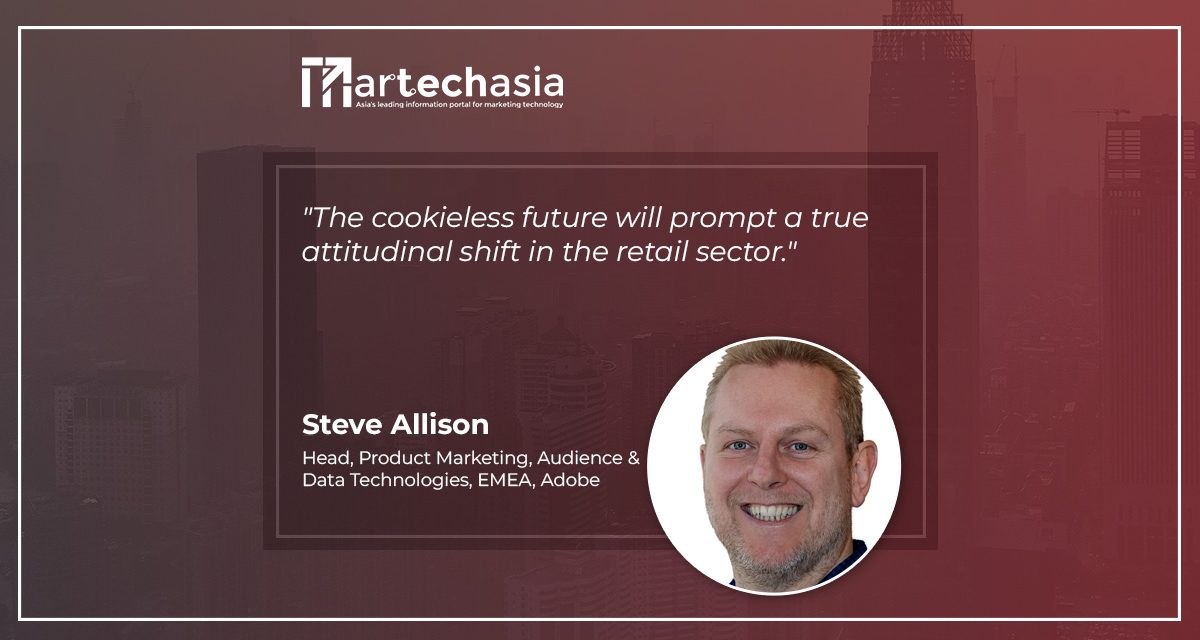Cookieless represents an opportunity to redress the imbalance of power between retail businesses and consumers.
While the steady march toward the abandonment of third-party cookies presents challenges for digital marketers, it’s also an opportunity to embark on a data revolution, a chance to redefine the modern relationship between customer and brand – one built on trust and respect.
In retail, the impact will perhaps be felt more keenly than any other industry. After all, retail marketing is all about creating experiences with customers, not just advertising to them. Trust is a fundamental part of this, with consumers more privacy-aware than ever before when they shop – yet they still crave personalised experiences that speak to their unique needs and wants.
The dawn of a new digital experience age
With third-party cookies on their way out, there’s no doubt the way retail brands collect data, build audiences, and deliver experiences is changing. In fact, according to Adobe’s Digital Trends, six in ten senior executives say that adapting to the requirements of the cookieless future will have a ‘disruptive effect’ on their marketing.
But disruption doesn’t have to be a bad thing. After all, the fundamentals of retail marketing will remain the same: using quality data to better understand, get closer to, and build trusting relationships with customers.
And, let’s be honest, third-party cookies were never perfect. Most marketers will recall conversations about low match rates (critical to delivering omnichannel experiences) and the open nature of third-party cookies, meaning everyone had access to the same level and quality of data. Retail brands had visibility over third-party data, yes, but never a full understanding of their customers.
The result of third-party cookies becoming defunct is an opportunity for brands to shift their marketing strategies away from quantity and toward quality, where customer data profiles are infinitely more accurate, powered by consent-based first-party data. With this higher-quality data comes the ability to create more powerful experiences to match consumers’ higher expectations.
So, what exactly is going the change in the retail marketing world? Savvy marketers aren’t waiting until third-party cookies have completely vanished to start testing and implementing new practices. Apple’s move towards making explicit consent a requirement – coupled with automatic deletion of cookies –means marketers and advertisers are already operating with less data. But, instead of focusing on the negatives, marketers have an opportunity to find ways to better use the data they have and earn more first-party data directly from their customers. Here’s how:
How retail can stay ahead of the cookieless curve
- New technologies to support first-party strategies: Many modern technologies rely on third-party cookies to fuel a range of marketing activities, New platforms are emerging that shine the spotlight squarely on first-party data as the new lifeblood of a brand’s customer experience approach. Investing in a first-party data strategy is the only way for companies to get a more complete view of the consumer and create a lasting connection built on trust. The emergence of Customer Data Platforms (CDPs) – such as Adobe’s Real-time CDP (built on Adobe Experience Platform) –presents a unified hub that allows brands to not only house data, but also enables marketers and others across the business to better understand and take action on it.
- Real time or bust to ensure value exchange: In retail, some forms of personalisation needs to happen almost instantly. A modern CDP empowers marketers to update customer profiles in real time, responding to market shifts and customer behaviours with lightning speed. Real-time first-party data allows the customer to stay in control of their data, while harnessing the retailers’ expert tools to provide the best possible experience.
- Machine learning to power personalisation for known and unknown visitors: Prior to their demise, third-party cookies were the primary means of understanding and targeting unknown visitors to a brand’s website. Today, machine learning is taking centre stage when it comes to engaging anonymous visitors with timely and personalised content and experiences. Machine learning allows brands to identify common patterns and unknown visitor journeys, identifying the right moment to inquire about registration and consent, accelerating their transformation from anonymous visitor into known customer by delivering the right experience at the right time.
- Data-collaboration partnerships to reach new audiences: This allows retailers to expand their own first-party data library by combining it with partners in a privacy-aware way, resulting in better insights and higher levels of personalisation. When customers give their consent, partners can exchange non-sensitive data to build more complete pictures of a customer’s behaviour and preferences, and tap into new audiences.
Filling the cookie-shaped gap
The cookieless future will prompt a true attitudinal shift in the retail sector. Where before, retailers used third-party data to target campaigns at a specific point in time, the first-party future will see brands adopt a lifetime value view of their customers, based on a respectful, two-way relationship where both parties benefit.
After all, depending on the context, personalisation can come in a number of shapes and sizes – from content delivery to offline experiences – at both the known and unknown customer levels. Cookieless represents an opportunity to redress the imbalance of power between retail businesses and consumers, an opportunity to build trust where missteps may have been made in the past, and a chance to rewrite the customer experience, putting the customer in charge of the information they share, without compromising their modern retail experience.
(First published on Adobe blog)


















